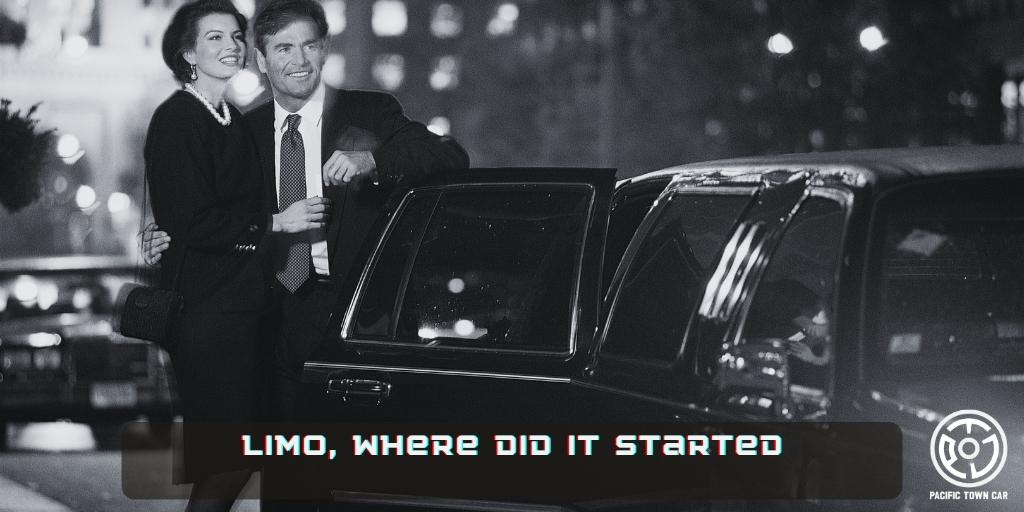The idea of getting a limo for rent in San Francisco and Los Angeles, CA could come to you naturally when you think of arriving or departing in luxury and style. After all, limos have become synonymous with class and style. Though once they were thought to be the prerogative of just the uber-rich, they have now become somewhat affordable and within the grasp of the common man as well. Perhaps that’s why a person who takes the public transport to reach his office won’t mind hiring a luxury limo service in San Francisco and Los Angeles, CA, when he takes his beloved to an anniversary dinner. He could even board a luxury car with his family when on a wine tour to Sonoma or Napa Valley when he considers the tour to be a special occasion and want it to be as comfortable and luxurious as possibly money can buy. If you have taken a limo ride, you already know what it feels like. If not, you could consider renting a luxury limo service in San Francisco, CA for your personal or business needs sometime soon to experience how different it is than riding a public bus or a cab that you can book via ride-sharing apps. While you plan your first limo ride or gloat about the luxurious interiors and amenities on board, have you even spared a thought to how a limo came into existence? Perhaps not. What if you could know about a limo’s origin and even a bit about its evolution into a modern luxurious vehicle? You would surely appreciate your ride onboard a limo even more then. So, let’s delve deeper to look into how it all happened.
1- Origin of the word “limousine”
There was once a region located in the heart of France that was called Limousin. For centuries, locals – typically shepherds, in that area were used to wearing hooded cloaks that were quite unique in style. These cloaks offered protection from the elements in the soggy countryside, especially on those chilly nights.
When the limousine was created sometime in the 1700s as a horse-drawn carriage to help people belonging to the higher echelons of society move around in luxury, the vehicle just had an enclosed compartment for the passengers. Since it resembled the traditional Limousin cloak’s hood, it was given the name “limousine”. Thus, the word “limousine” was born. The similarity could appear to be too far-fetched to some but the reality remains that a town full of cloaked people served as the inspiration for the term. However, it’s interesting to note that the vehicle was a far dream from its modern counterparts (in terms of amenities or the luxury quotient) in those early days. Yet, it was considered to be fit just for the famous or wealthy people as the cost of having your own horses, personal chauffeur, and a covered carriage were signs of your prosperity and showed everyone around how well off you were. Quite naturally, the limo became a status symbol that would differentiate society’s higher class from others.
The term “limousine” remained in use for a long. In 1902, automobile chauffeured rides were introduced for the first time and the word “limousine” continued to be in use.
2- Introduction of the stretch limo
When you think about a luxury limo service in San Francisco, CA, perhaps the first image that your mind conjures up is of a stretch limo. After all, stretch limos have become synonymous with the word “limousine”. But it was a long wait since 1902 after people got to experience chauffeured rides on an automobile.
When you get a limo for rent in San Francisco, CA today, the vehicle that would arrive to transport you is quite different from those that were available in those early years. In fact, limos weren’t that large during the 1920s. The significant difference that remained between the regular cars of the era and the limos were the different seating arrangements for the driver and the passengers.
It all changed in 1928 when the stretch limo was born. Armbruster – a company based in Fort Smith, Arkansas, which was involved in building and repairing horse-drawn vehicles earlier, got into a thriving auto body repair business by the 1920s. The company became a leading name in and around Fort Smith and even in Tulsa (Oklahoma) which was about 120 miles away to the Northwest.
Jordan Bus Lines, a bus company based in Fort Smith, commissioned Armbruster sometime between 1921 and 1923 to make them a touring car-based coach that would have multiple doors and an extended wheelbase. The aim was to use this vehicle for short inter-city runs as Jordan found running a full-sized coach (that could accommodate 25-29 passengers but often had 50% of its seats empty) on short runs to be a loss-making operation.
The stretch limo was often called big band buses as they were capable of accommodating large bands and all their equipment. The first famous bands to use these vehicles were the Benny Goodman Orchestra and Glen Miller and his Orchestra. Soon, other bands became part of this new trend as they realized how bandleaders, their crew members, and all their equipment could be transported at the same time easily via these stretch limos. By the 1930s, others like hotels, tour companies, airlines, transport companies, and big corporations joined the bandwagon and started using stretch limos to transport a large group of people along with their luggage efficiently and swiftly.
Until the late 1940s, there was no real competition in the market for Armbruster. It was the solitary firm that produced multi-door limousines (along with Chevrolet-based airport buses) in any quantity that its clients or the market needed.
3- Limousines got better and bigger
Soon, the six-door limousine entered the market. These were usually funeral cars that had a Cadillac’s chassis. With time, the limousines continued to become better, bigger, and more popular. As their interiors got a makeover and became luxurious, they evolved into being a luxury status symbol of the rich and famous. As a result, movie stars, famous musicians and bands, artists, and other wealthy people started opting for limos as their go-to option for ground transportation.
During the 60s and 70s, the length of the limos stretched even further. 1961 Lincoln Continental, which was the presidential limo for John F. Kennedy, measured 33 inches longer than the production Continental and even came equipped with gadgetry that was unheard of earlier.
When you take a look at the limos prevalent during the 80s and 90s, the vehicle’s previous history would seem bland. Limos during this period not only became larger but also started offering amenities that most of us have come to associate with modern limousines. These include amenities like lighting, audio, video, phones, and much more.
Once the 100-feet-long American Dream limo arrived on the scene, the entire concept of the limousine changed. This vehicle was built by modifying a 1970s Cadillac Eldorado model extensively. Its rear seats were removed and it was joined with another Cadillac model. By adding twenty-four more wheels (ten at the back, eight in the middle, and six in the front) to its original two front wheels, the vehicle was transformed into a 100-feet-long limousine (when measured from bumper to bumper). There were a whopping seventy-two seats and a wide range of amenities on offer inside the American Dream limo. It was powered by two motors and needed two drivers behind the wheels. The drivers had two cabins of their own, one at the back and another in front.
After it was completed in 1992, the American Dream limo was a sight to behold. It had a hot tub in its interior along with a plush living room. The car also had a Jacuzzi, a tanning bed, a sun deck, a swimming pool with a diving board, a king-sized water bed, a putting green for golf enthusiasts, a satellite dish on top, and its own helipad on the backside. In case the limo was needed to be carried from one destination to another, there was a detachable panel midway, which would help the vehicle get loaded on trailers in two parts.
Despite its lavish features, it was difficult for the American Dream limo to negotiate a turn (which is where the two drivers came into the picture as the one in the back could reverse the vehicle). It was also illegal to drive it on the road and the vehicle didn’t have permission to be driven publically. It was leased to a company that used it for promotional purposes. After the lease ended, it rotted away in a New Jersey warehouse. Efforts to give it a second chance at life via auctions held in 2012 failed. In 2014, New York’s Autoseum Automotive Teaching Museum acquired it. It aimed to use the American Dream limo to help teach its students ways to build and fix cars that were in such dismal conditions.
Now that you know a bit about the limousine’s history, perhaps you’ll appreciate it more the next time you get a limo for rent in San Francisco, CA.

